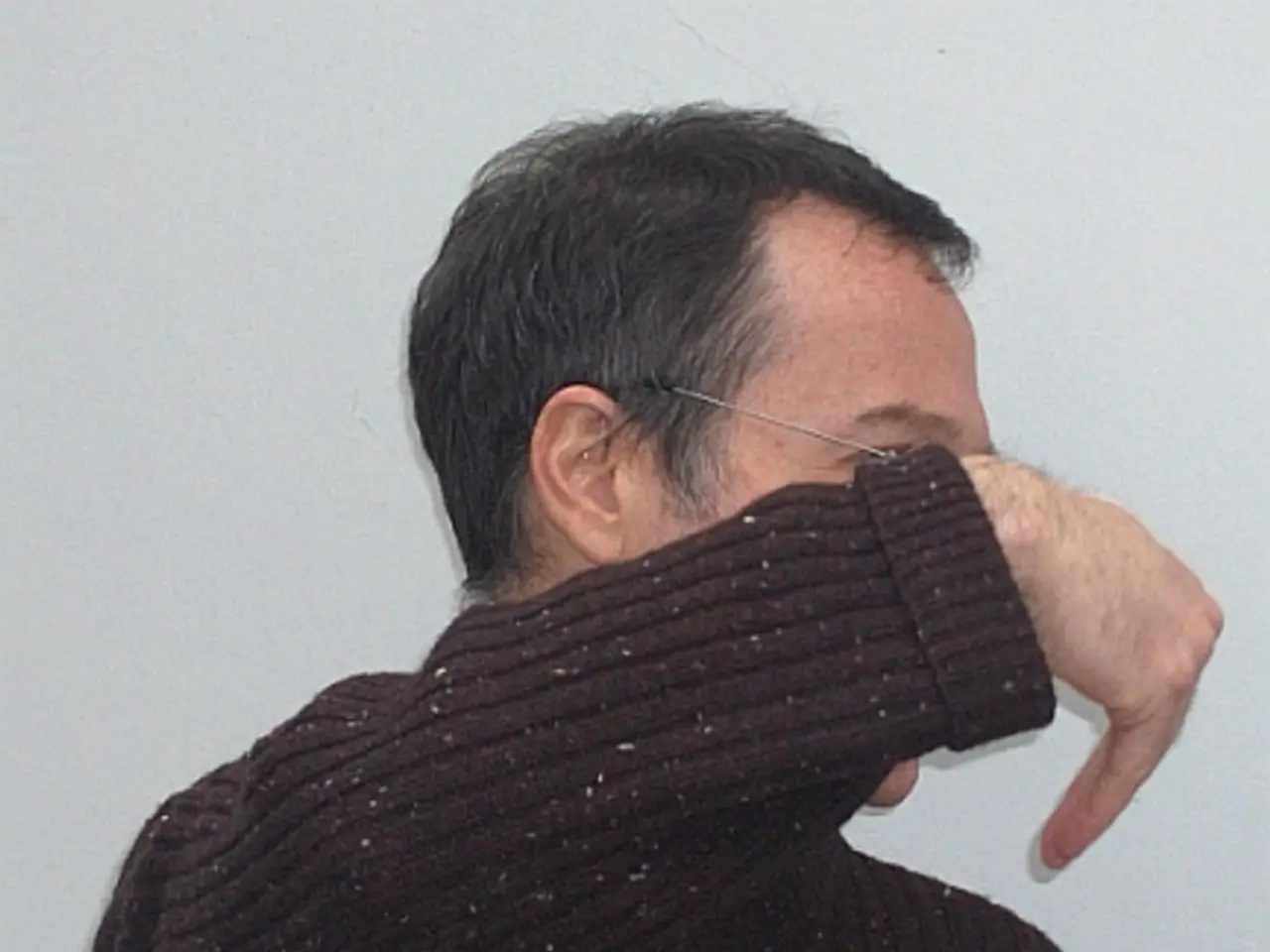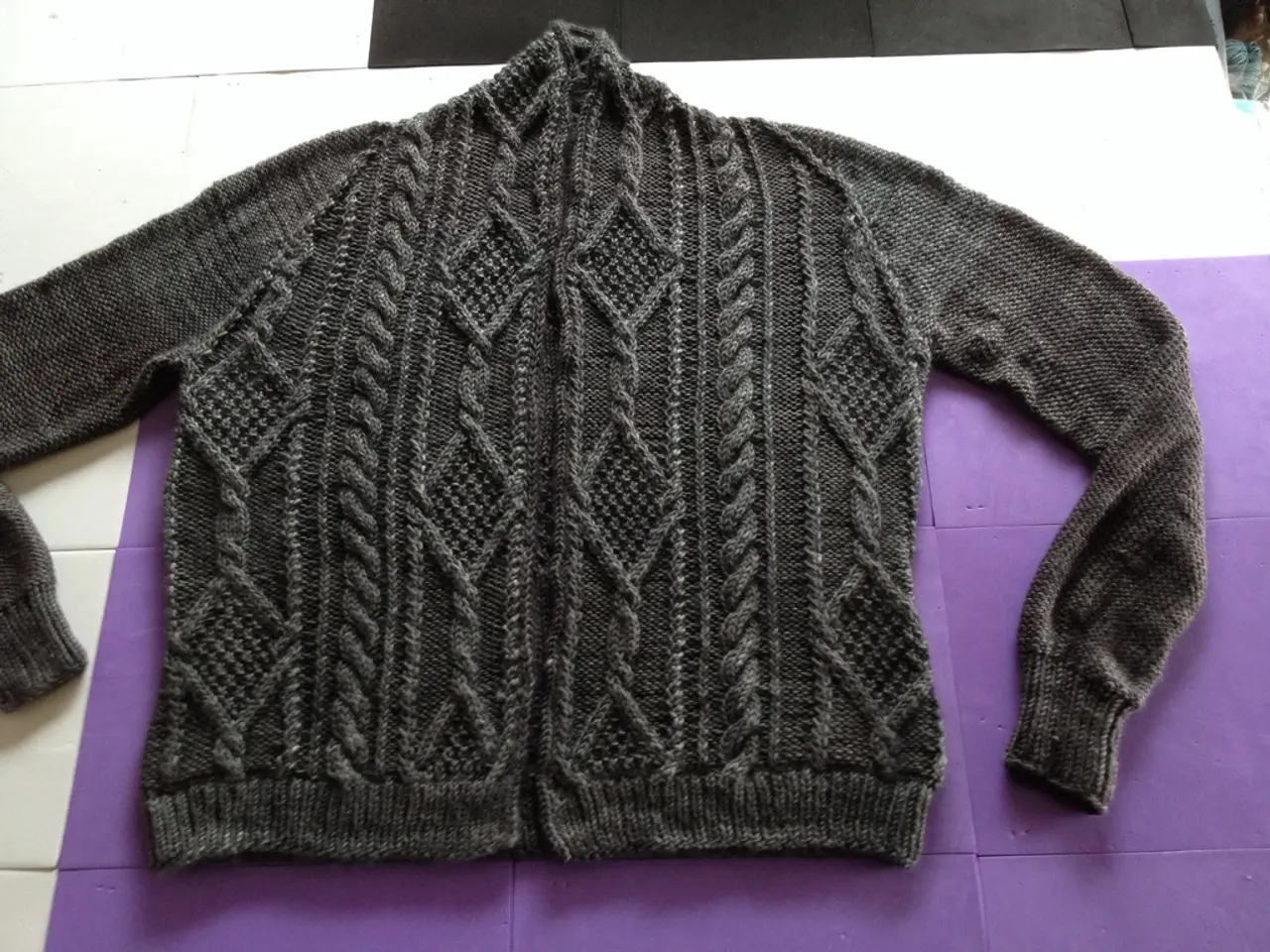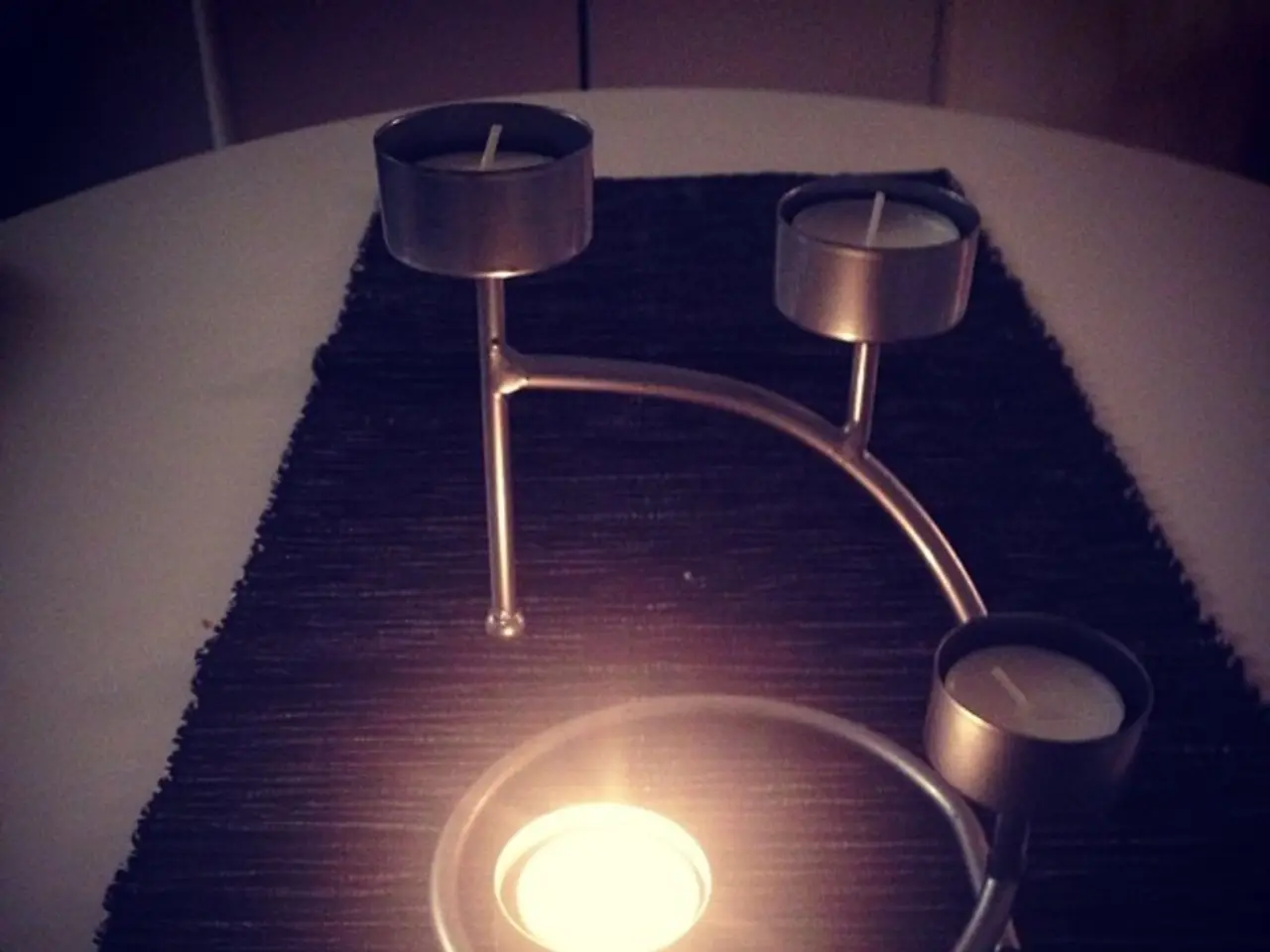Instructions for Sewing a Knitted Sweater Without Causing It to Fray
Transforming Knitted Sweaters: A Guide to Steeking
Steeking, a technique used to alter knitted garments, can open up a world of possibilities for your knitwear creations. This method allows you to convert a pullover into a cardigan, change the neckline style, or adjust the length of a sweater. Here's a step-by-step guide to steeking using a sewing machine.
Steeking with a Sewing Machine
- Identify and Mark the Steek Area: Decide where the steek (cutting line for openings like cardigan fronts) will be. Mark the steek line clearly on the knitted garment.
- Sew Reinforcement Stitches Along the Steek: Using your sewing machine, sew two parallel lines of stitching on either side of the marked steek line to stabilize the knit and prevent unraveling. The stitching should be close to the cutting line, typically about ¼ inch (0.6 cm) apart. Use a small zigzag stitch or straight stitch depending on your fabric and machine capabilities. Secure the thread at both ends to avoid loosening.
- Cut Carefully Between the Stitches: Once the reinforcing stitches are secure, cut precisely down the center between the stitching lines. This creates the steek opening while the stitched edges keep the knit from unraveling.
- Finish the Edges if Desired: The sewn edges are often enough to secure the steek, but additional finishing such as felting the steek (if wool) can be done for extra security. Some knitters skip felting if confident in their sewn edges.
Key tips: - Use a sewing machine that can handle knit fabric and has a zigzag stitch option. - Test your stitching on a scrap piece of knit fabric first to adjust tension and stitch length. - Secure thread ends by backstitching or tying off threads. - Cut slowly and carefully to avoid cutting stitches.
Steeking Without a Sewing Machine
For those without a sewing machine, steeking can still be achieved. Mark the area with straight pins, cut into the area slowly, and if needed, rub the edges of the cut section together to felt them. This method may not be as precise, but it can be effective for certain projects.
Choosing the Right Fiber
The sewing machine technique is best for fibers that don't stick together naturally, such as cotton, linen, and silk. Animal fiber yarns stick together more than other fibers, so when using the crochet method, always insert the crochet hook into the knitting and pull up a loop while single crocheting the marked line.
By mastering the art of steeking, you can take your knitwear creations to the next level, transforming pullovers into cardigans, crewnecks into V-necks or boatnecks, and altering the length of your knitted sweaters. Happy steeking!
- Steeking can be used to customize various aspects of your knitted garments, not just sweaters, as you may choose to adjust the neckline style of a fashion-and-beauty top or alter the length of a home-and-garden throw with this technique.
- Incorporating steeking into your knitting projects can lead to a more personalized lifestyle, as you're able to adapt your garments to better suit your individual taste and comfort.




